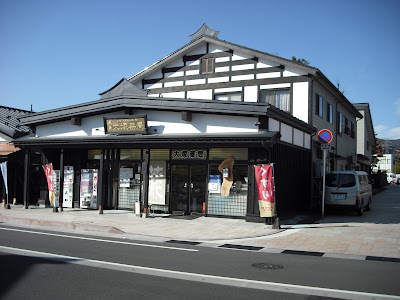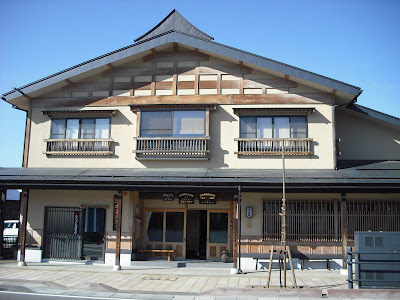八頭は里芋の一種で、よくおせち料理(または単に「おせち」)に使われます。

I first peeled the yatsugashira, cut them into manageable sizes, and put them in a bowl of water with some vinegar in it to prevent discoloration. While so doing, I occasionally put my hands in the vinegar water to prevent them from getting itchy from the calcium oxalate contained in the yatsugashira. (Even so, my hands got itchy after I peeled them, and I put some vinegar on my hands, but the itchiness remained for an hour or so.) Other types of taro and yamaimo (yams) also contain this substance, and will cause itchiness to your hands. To avoid this from happening, you are recommended to boil the taro before peeling; heat them in a microwave before peeling; wear rubber gloves while peeling; or take other appropriate measures.
I then put them in a pot of water and some vinegar, brought them to a boil, simmered for 2-3 minutes, and drained the water. This process (boiling and then draining the water) is called yudekoboshi (< yudekobosu (verb)). The purpose of yudekoboshi for yatsugashira (and other types of taro) is to remove sliminess and aku (harshness). I usually omit this process when I make satoimono nikkorogashi, because I like the sliminess.
Then, I put water to cover half the height of the yatsugashira, and brought to a boil again, added 2 tablespoons of sugar and 1 teaspoon of instant dashi, and put the lid on. Five minutes later, I added some soy sauce. I continued to simmer for 15-20 min. with the lid on, until tender.
まず八頭の皮をむき、適当な大きさに切り、酢水を入れたボールに入れました(変色を防ぐため)。その間、その酢水に手を時々入れて、八頭に含まれるシュウ酸カルシウムで手がかゆくなるのを防ごうとしました(それでも、皮をむいた後にかゆくなったので、手に酢をつけましたが、かゆみは一時間程度続きました)。他の種類の里芋や山芋にもこの物質が含まれているので、手がかゆくなります。それを防ぐには、皮をむく前に茹でる、むく前に電子レンジで加熱する、ゴム手袋をして皮をむく、など適切な手段を取るといいと思います。
八頭を水と少し酢を入れた鍋に入れ、沸騰させ、2、3分煮てから、水を切りました。この工程(茹でてから水を切る)は茹でこぼしと言います(動詞「茹でこぼす」から)。八頭(や他の里芋)の場合、茹でこぼす目的は、ヌメリと灰汁(アク)と取ることです。私は、ヌメリが好きなので、里芋の煮っ転がしを作る時は、この工程は省きます。
次に、八頭の高さの半分程度まで水を入れ、また沸騰させ、砂糖大さじ2、出汁の素を小さじ1入れ、蓋をしました。5分後、醤油を少し入れ、15~20分、蓋をしたまま、柔らかくなるまで煮ました。

Renkon (lotus root) is another ingredient often used in osechi ryori.
レンコンもよくおせち料理に使う食材です。

I cut the renkon into thin slices, and put them in a bowl of water with some vinegar to prevent discoloration. I drained and fried them in oil (sesame seed oil, this time), and added 30 ml soy sauce and 30 ml mirin. I kept simmering, with the lid on, until done.
Note that for osechi, renkon is usually seasoned with vinegar, not fried.
レンコンを薄く切って、変色防止のため酢水の入ったボールに入れました。水を切って、油(今回はごま油)で炒め、醤油30ml、みりん30ml入れ、蓋をしたまま、火が通るまで煮ました。
おせちでは、レンコンは炒めるのではなく、酢でつけるのが普通です。




































